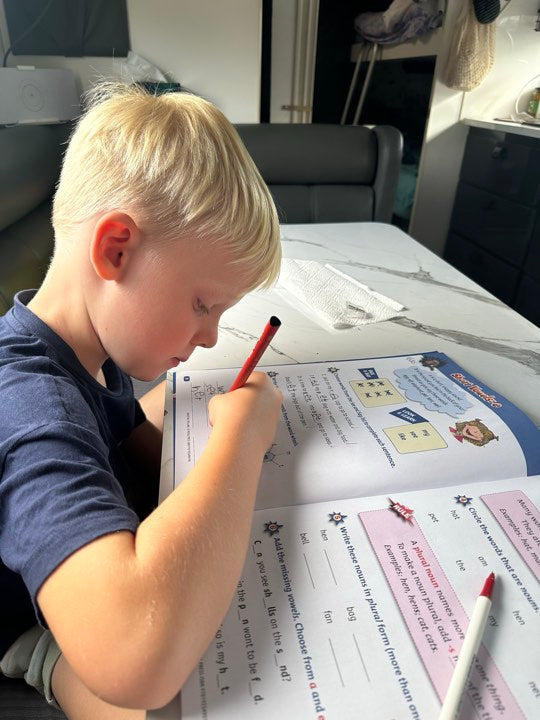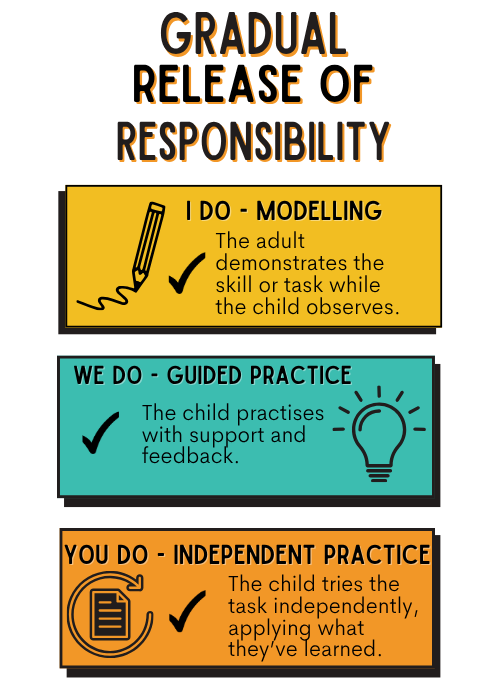Establishing a Routine
🧭 Structuring Your Home School Sessions on the Road

At Caravan Classroom, we believe children thrive when learning is guided by a consistent structure. While one of the great benefits of travelling and home schooling is the freedom to follow spontaneous interests, a clear session flow can make theoretical and curriculum-based content more accessible, more engaging, and ultimately more effective.
Of course, structure should always reflect your child’s individual learning style and pace. If you're not sure where to begin, here's a sample session structure we commonly use with our own children - designed to balance routine with flexibility.
🧠 Suggested Session Flow

🔍 Note: While our plans include the curriculum content (Phase 3 of the suggested session flow), warm-up, warm-down, and skill development activities are not provided as lesson plans. Instead, we encourage families to personalise these using resources that best suit their own child’s needs and interests. Our website includes information about developing essential skills - see the link below:
This model helps build confidence and competence by providing appropriate scaffolding at each stage.
🎓 Teaching New Curriculum Content
What is the Gradual Release of Responsibility (GRR)?
The Gradual Release of Responsibility is a teaching model that helps children learn new concepts by slowly shifting the responsibility for learning from the teacher (or parent) to the learner. It involves three key stages:
Collapsible content

When introducing new content, we recommend following this structured process. It aligns with the Gradual Release of Responsibility (GRR) model, which supports learners in moving from guided to independent work over time.
🪜 Steps for Teaching New Content: How to Structure Curriculum Focus Sessions (Phase 3)
Step 1: Learning Intention
Clearly state what your child is expected to know, understand, or do. This gives the session purpose and focus.
👉 E.g. “Today we’re learning how to solve two-digit addition problems using regrouping.”
Each of our learning blocks includes a clear learning intention to ensure the curriculum is addressed in a way that is purposeful, focused, and easy to understand.
Step 2: Glossary of Terms
Introduce and define key vocabulary that will appear in the lesson. This helps build comprehension and fluency.
🧠 Tip: Write these on a whiteboard or create a visual word list.
Step 3: Overview of the Concept
Provide an introduction to the topic through discussion, a reading passage, or a short video clip.
Step 4: Demonstrate / Model the Skill (“I Do”)
Show your child exactly how to complete the task step-by-step. Think aloud as you go to model reasoning and decision-making.
Step 5: Practise Together (“We Do”)
Work through a few examples with your child. Offer guidance, ask questions, and encourage problem-solving.
Step 6: Independent Practise (“You Do”)
Invite your child to complete a similar task on their own. Step back and observe how they manage, offering help only as needed.
Step 7: Provide Feedback
Give meaningful, constructive feedback using the compliment sandwich method:
a. Start with praise
b. Offer a suggestion for improvement (linked to the learning intention)
c. End with encouragement.
Focus on priority areas when providing feedback and refer back to the learning intention.
Step 8: Apply the Learning in a New Context
Encourage your child to transfer their new knowledge or skill to a different context or subject area. This deepens learning and shows flexibility.
Step 9: Revise, Reflect, and Consolidate
Wrap up by reviewing key ideas, reflecting on what was learned, and answering any lingering questions. Don’t forget to revisit the content again in the future and / or apply to new contexts to ensure that knowledge is retained.
🔁 A Note on Mastery
Remember that learning takes time.
You may not move through all steps in one session. For example:
· Session 1: You might only model the task and practise together.
· Session 2: You might revise and then move into more independent practice.
As your child’s confidence grows, they’ll naturally begin to take on more of the responsibility.
If your child is struggling to grasp a concept:
· Try explaining it in a different way
· Use new examples or visual aids
· Switch to a hands-on resource or video
· Allow extra time or break the task into smaller steps
💬 Encouragement & Realism
We know that no two days look the same - especially when you’re learning on the road.
Some days, everything will fall into place: your child will be focused, the resources will click, and you’ll move smoothly through your learning structure. Other days, you might only get through a warm-up or decide to follow an unexpected learning interest instead - and that’s perfectly okay.
Consistency is helpful, but flexibility is essential. The goal is progress, not perfection. Trust your instincts, stay responsive to your child’s needs, and remember: every small step is a part of the learning journey.
To make all this easier, we’ve created a Daily Session Planner to help you track learning, document outcomes, and reflect on progress.
The planner includes space for:
✅ Warm-ups and skill development
✅ Learning intentions and curriculum codes
✅ Observations and session notes
✅ Progress tracking for end-of-year reporting
📥 Download the Daily Session Planner
🌟 Ready to Home School with Clarity and Purpose?

